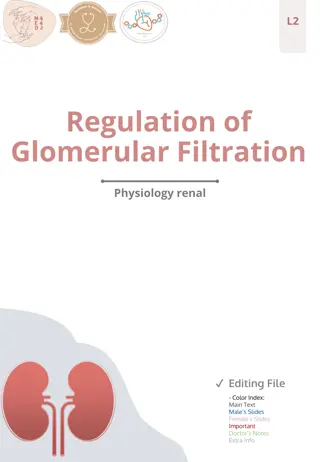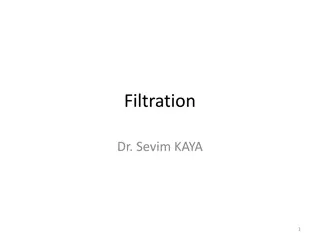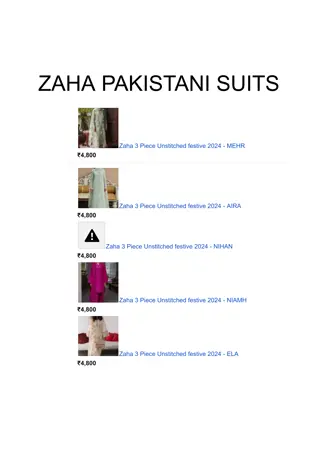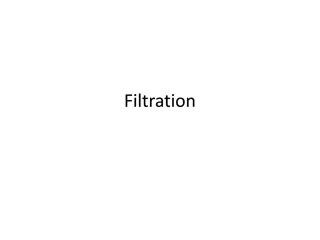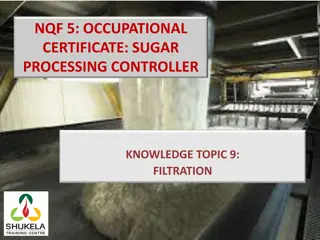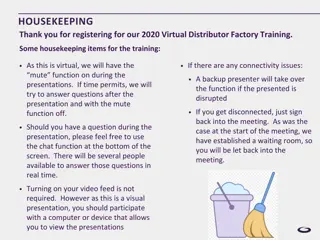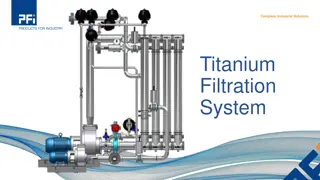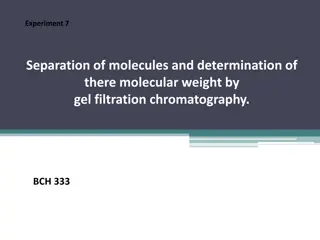Mini Strainer vs. Traditional Filtration: Which One Suits Your Lab Needs?
Selecting the right filtration method depends on the specific needs of your lab. If accuracy, efficiency, and sample purity are priorities, the best lab cell strainers, like the Mini Strainer, provide a modern solution that outperforms traditional fi
Uploaded on Feb 25, 2025 | 0 Views
Download Presentation

Please find below an Image/Link to download the presentation.
The content on the website is provided AS IS for your information and personal use only. It may not be sold, licensed, or shared on other websites without obtaining consent from the author.If you encounter any issues during the download, it is possible that the publisher has removed the file from their server.
You are allowed to download the files provided on this website for personal or commercial use, subject to the condition that they are used lawfully. All files are the property of their respective owners.
The content on the website is provided AS IS for your information and personal use only. It may not be sold, licensed, or shared on other websites without obtaining consent from the author.
E N D
Presentation Transcript
UBERSTRAINER https://uberstrainer.com /
MINI STRAINER VS. TRADITIONAL FILTRATION: WHICH ONE SUITS YOUR LAB NEEDS? Choosing the right filtration method is essential for laboratory work, especially when handling small sample volumes. While traditional filtration techniques have been widely used, newer tools like the Mini Strainer offer a more efficient and precise alternative. For researchers looking for the best lab cell strainers, understanding the differences between these two methods can help in making the right decision.
UNDERSTANDING MINI STRAINER AND TRADITIONAL FILTRATION Mini Strainer: A Modern Filtration Tool The Mini Strainer is a compact cell strainer designed for small sample volumes. It fits a variety of tubes and well plates, making it a versatile choice for laboratories. Available in multiple mesh sizes ranging from 5 m to 200 m, it ensures fine filtration without excessive sample loss. Key features include: Optimized for Small Samples: Ideal for working with limited material. Wide Compatibility: Fits tubes from 1.5 ml to 15 ml and well plates. Single-Use and Sterile: Reduces contamination risk. Precise Filtration: Helps in cell separation technology and flow cytometry.
TRADITIONAL FILTRATION METHODS Conventional filtration systems rely on paper filters, membrane filters, or centrifugation techniques. These methods have been used for years but come with limitations, particularly for delicate biological samples. Common types of traditional filtration include: Membrane Filtration: Often used for microbiological and chemical filtration. Centrifugation: Separates particles based on density but may require additional steps. Paper Filtration: A simple technique for larger particles but lacks precision for lab cell strainer applications.
COMPARING MINI STRAINER AND TRADITIONAL FILTRATION 1. Efficiency in Sample Handling The Mini Strainer is designed for small sample volumes, minimizing waste and reducing handling errors. Traditional filtration methods, such as membrane or paper filters, often require more material and additional processing steps. 2. Precision in Filtration For applications like cell separation technology, the Mini Strainer offers a more targeted approach with specific mesh sizes. Traditional filters may not provide the same level of control, leading to inconsistent results.
3. Contamination Risk Using pre-sterilized Mini Strainers lowers the risk of sample contamination. In contrast, traditional filtration often involves reusable components, which require thorough cleaning and sterilization. 4. Compatibility with Strainer Cascade Systems One major advantage of the Mini Strainer is its ability to integrate with a strainer cascade researchers to filter samples through multiple mesh sizes in sequence, improving sample purity. Traditional methods may require multiple filtration steps, increasing processing time. setup. This allows
5. Versatility in Applications The Mini Strainer is widely used in: Flow cytometry sample preparation Removal of cell clusters and debris Blood sample processing Magnetic and fluorescent cell labeling Traditional methods are useful for broader filtration needs but may not be as effective for lab cell strainer applications that require high precision.
WHICH ONE IS RIGHT FOR YOUR LAB? For researchers working with small volumes, delicate cell cultures, or requiring precise separation, the Mini Strainer is the better choice. It offers improved efficiency, reduced contamination risk, and compatibility with advanced filtration techniques like strainer cascade systems. Traditional filtration remains relevant for general applications but may not provide the same level of precision.
CONCLUSION Selecting the right filtration method depends on the specific needs of your lab. If accuracy, efficiency, and sample purity are priorities, the best lab cell strainers, like the Mini Strainer, provide a modern solution that outperforms traditional filtration methods.


